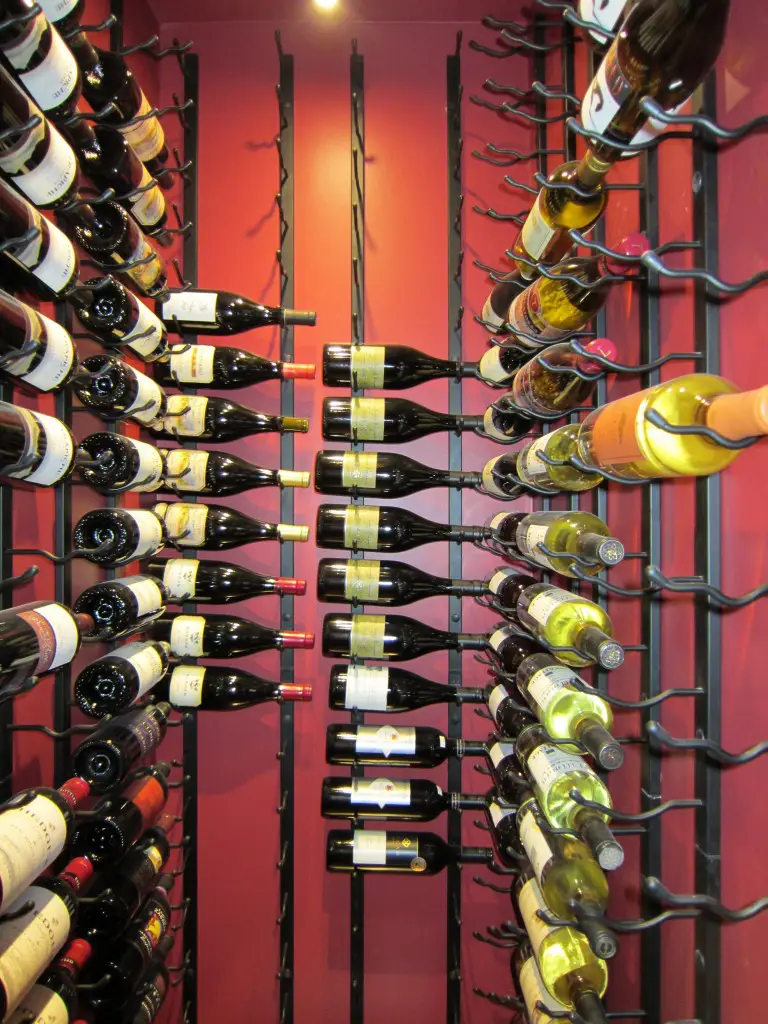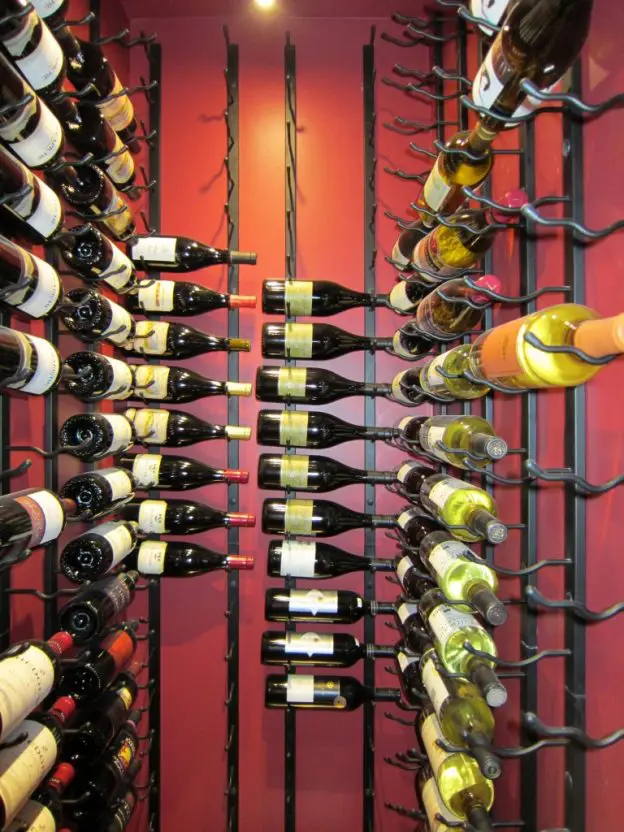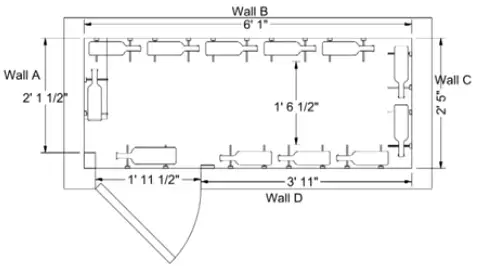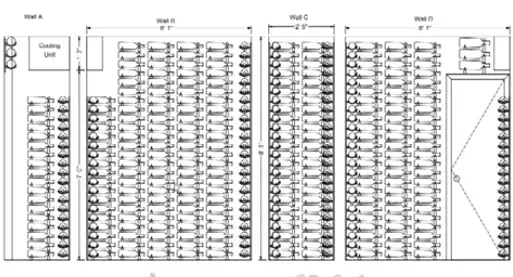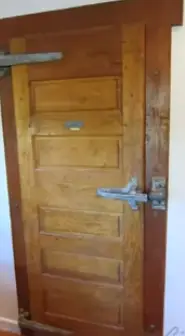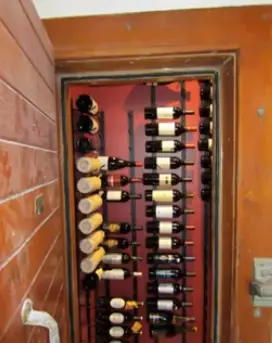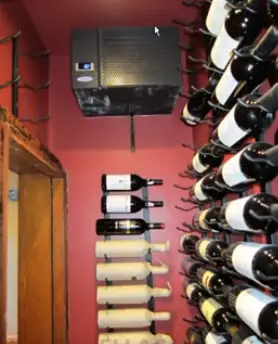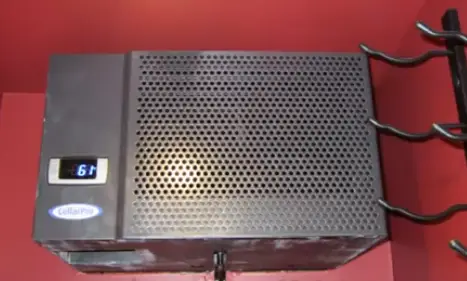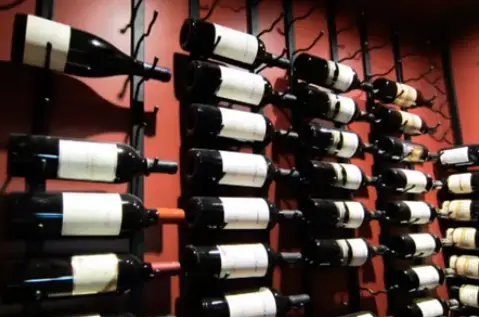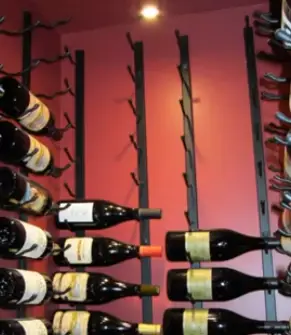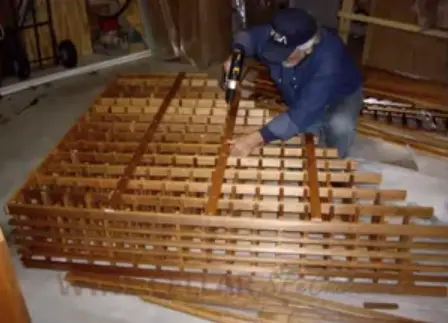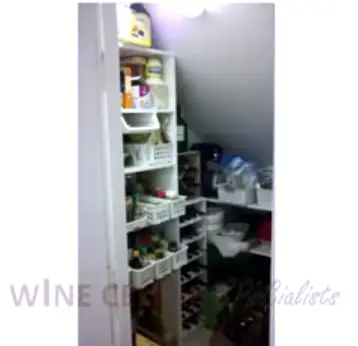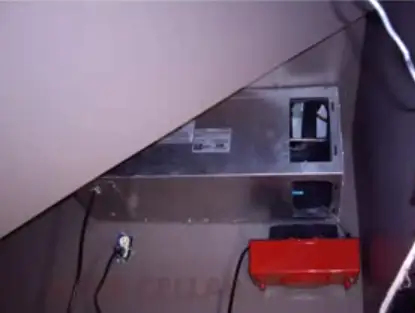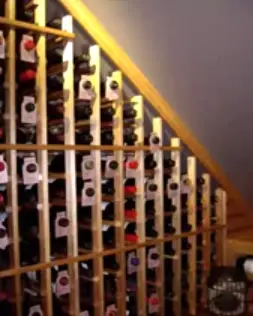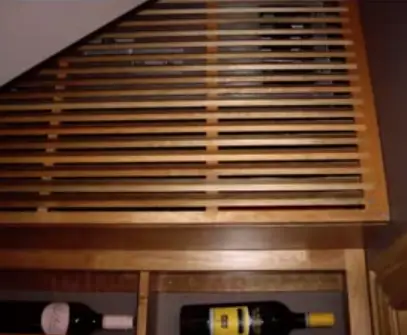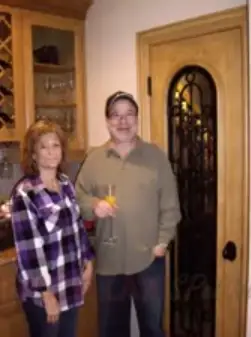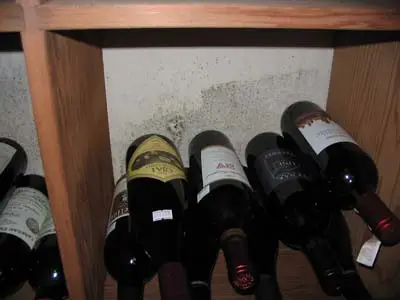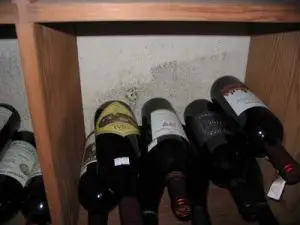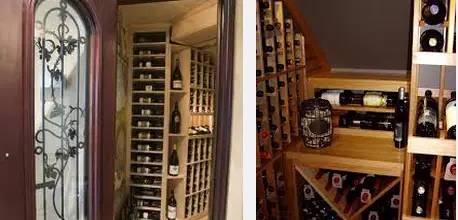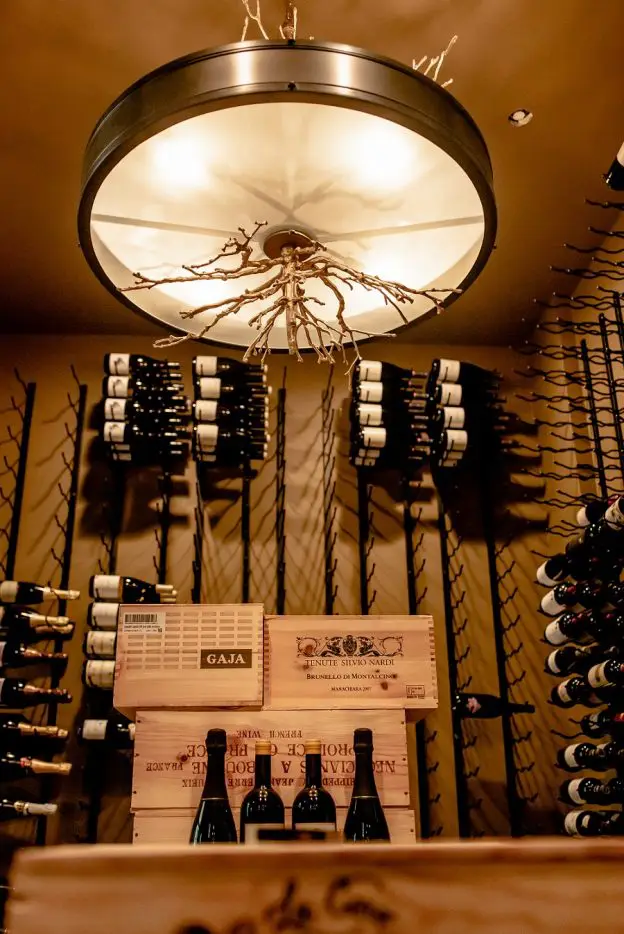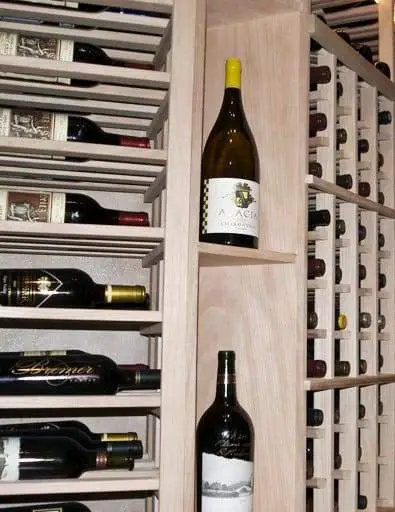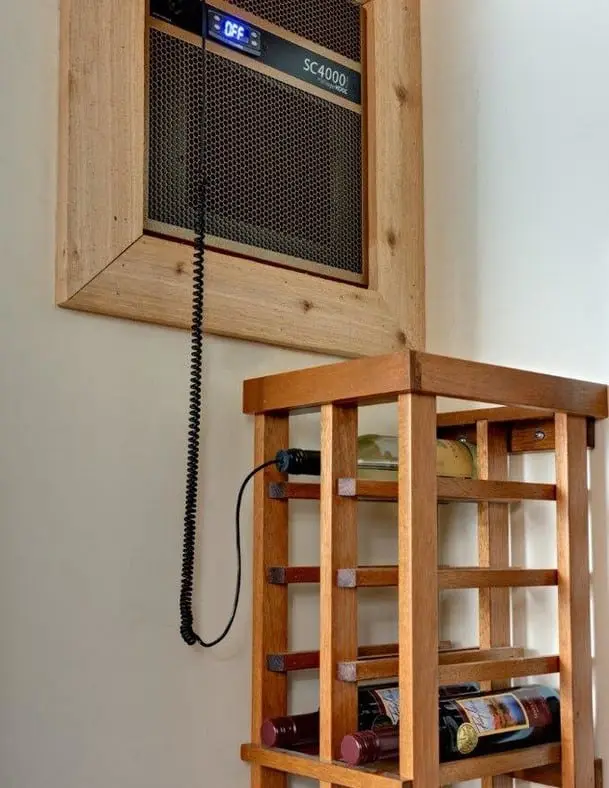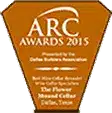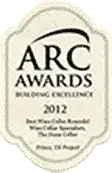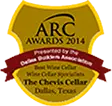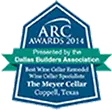Small Contemporary Residential Custom Wine Cellars Dallas Texas – Griffith (A Processed Video Transcription)
I’d like to show you what can be done in a very small space. The homeowner had a very tiny closet; it was only slightly over six feet wide and not quite two and a half feet deep. He did the vapor barrier and insulation in the walls and the ceiling and we added VintageView metal wine racks.
What you are seeing here are the plan views of the various elevations. Wall A is the side wall as you walk in to your left, the cooling unit above. Here we were able to add one row of wine racks.
The back wall, we were able to add four rows actually and the short fifth wall under the wine cellar cooling unit. The right wall we had two rows floor to ceiling and the door wall has three rows floor to ceiling as well as space for three magnums above the door.
I want to show you some photographs of the completed wine cellars Dallas Texas. Here we are looking at the wine cellar door, and the homeowner used an antique freezer door which was reclaimed and it has very good insulation and seal.
As we open the wine cellar door and look into the cellar you can see that he painted the walls in deep red or burgundy color. The black VintageView metal wine racks looks beautiful on the wall; it really creates a nice look for his small cellar.
You can see a little bit of the left wall here and part of the back wall as we move along this is the left wall and you can see the left wall wine racks and here is the cooling unit above is blowing down this is a CellarPro 1800 wine cellar cooling unit. We use this unit, it goes through the wall and has a rear duct kit attached which grows about another ten feet and vents into the hall way.
As we move along, you’ll see a close up picture of the CellarPro and you will notice that it is 61 degrees. That is because we have the door open in taking photographs so the temperature has risen a few degrees.
This is the back wall of the wine cellar from at the top and this is the back wall looking toward the floor. This is the right wall looking back, you can see a little bit of the back wall, and the door wall as well as the right wall.
This is the close up of the right wall. Here are the vents in the hallway around the corner of the wine room where the wine cellar cooling unit is venting out.
Again we have the wine cellars Dallas Texas in a very small space that was created using the metal VintageView metal wine racks and the CellarPro wine cellar cooling unit.
If you want to see another actual project that incorporates VintageView’s metal wine racks and the CellarPro cooling unit, here’s a living room installation featuring a small wine cellar design!
Give us a call today if you have a small area or a large area that you like us to help you with.

 Dallas
Dallas 
